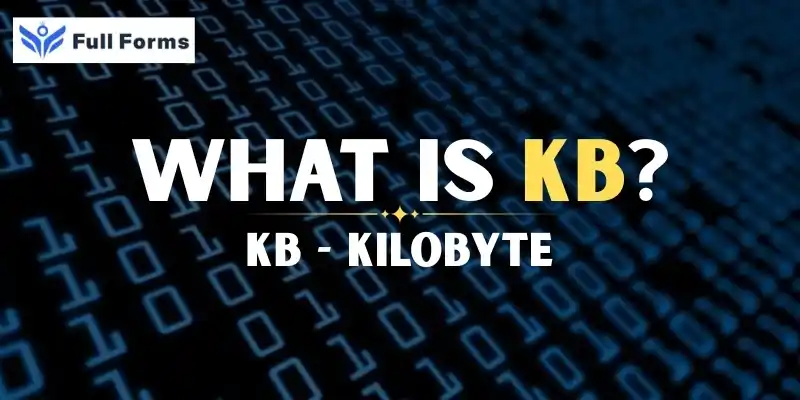Kilobyte
(KB)

Description
What is a KB?
Everything we do online, from sending a message to saving a photo, involves data. And those numbers are measured in different ways. The Kilobyte, or KB, is one of the most common units.
But what is a kilobyte, really? How big is it? And where do we use it in the real world? Let's make it easier to understand.
What is a kilobyte?
A kilobyte is a way to measure digital information or data. It doesn't hold much data, but it is the basis for much larger sizes like megabytes (MB), gigabytes (GB), and terabytes (TB).
1 Kilobyte (KB) = 1,024 bytes
A kilobyte is a little more than a thousand bytes. A byte is the smallest piece of data that a computer can store. It usually holds one character, like a letter or a number.
For instance:
- The letter A is one byte.
- Hello is 5 bytes long.
So a kilobyte can hold about 1,000 characters of text, which is about the same as one full page of typed text.
Why is it 1,024 bytes instead of 1,000?
This is a good question.
Memory and storage in computers use binary numbers (0 and 1) instead of the decimal system we use in math every day. The closest value to 1,000 in binary is 2^10, which is 1,024.
That's why:
- One kilobyte (KB) is equal to 1,024 bytes.
- 1 MB is the same as 1,024 KB.
- 1 GB is the same as 1,024 MB.
In the tech world, when we say "kilobytes," we usually mean 1,024 bytes, not exactly 1,000.
Where Do We Use Kilobytes?
Kilobytes are used to measure small amounts of data. Most of the time, megabytes and gigabytes are used in technology today, but kilobytes are still useful for small tasks.
Here are some examples:
- A text file that is 1–5 KB long
- A small email with no attachments is about 2–10 KB
- A page with only text usually has 10 to 100 KB of data
- A logo or icon image that is 20 to 50 KB in size
You will also see kilobytes when working with old files, low-resolution images, or code and scripts that don't take up a lot of space.
Kilobyte, megabyte, and gigabyte
Here's a simple comparison to help you understand where the kilobyte fits:
| Size | Unit | Example Use |
|---|---|---|
| 1 byte | Byte | Just one character |
| 1,024 bytes | Kilobyte (KB) | Text files and small papers |
| 1,024 KB | Megabyte (MB) | Pictures, MP3s, short videos |
| 1,024 MB | Gigabyte (GB) | Movies, games, apps |
| 1,024 GB | Terabyte (TB) | Cloud storage, hard drives |
So, one gigabyte is about one million kilobytes.
Do Kilobytes Still Matter?
Yes, they are, even in a world where storage is cheap. Kilobytes help us:
- Get the exact size of small files
- Keep an eye on how much data you use on the internet
- Know how much space a file will take up
- Make websites or apps load faster by keeping files small
Did you know that the smallest file is?
Some files, like blank text files, can be very small, only 1 or 2 KB. Some system configuration files or image files may also be less than 10 KB.
When making websites, developers often try to make files as small as a few kilobytes so that they load faster, especially for people with slow internet.
Example from Real Life
Let's say you write a short story that is 1,000 words long. That's 5,000 characters if we assume that one word is about 5 characters. That means your story would only take up about 5 KB of space, which is very small by today's standards.
You could put 200 of these stories in 1 MB and 200,000 of them in 1 GB. That's the power of digital storage: even small amounts like kilobytes can add up.
Last Thoughts
A kilobyte may not be very big, but it is an important part of how our digital world works. It helps you figure out how big files are, manage storage, and figure out how much data you're using. You're laying the groundwork for understanding larger data units like megabytes, gigabytes, and more by learning about kilobytes.
So when you see a file that is 45 KB, you will know that it is a small file that is made up of about 45,000 characters or bytes. It may be small, but it has a big impact on how we use technology every day.
